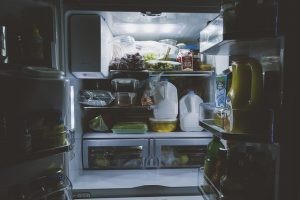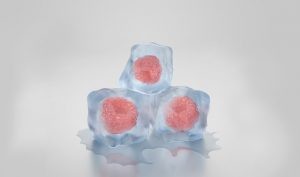
You just bought some milk and you want to make sure it lasts in the fridge but the temperature dial doesn’t seem to have any indicators. Fridge freezer temperature settings are rarely mentioned in the manual and often remain a mystery. So, if the numbers go from 1 to 5, then which is the coldest? Are these degrees or frosting power?
So on a refrigerator what setting is coldest (1 to 5)?
On every fridge the rules for the coldest settings are always the following:
The numbers on the fridge’s temperature dial indicate refrigerant power. The higher the number goes the colder the fridge will maintain. Setting it to 5 will make your fridge the coldest.
With this out of the way, it should be noted that a lower fridge temperature does not equal better food storage.
What number should a safe and efficient fridge be kept on?
First some clarifications:
- A refrigerator’s temperature usually ranges from 0.5 to 4 degrees Celsius (33 to 39 in Fahrenheit).
- It also matters on which shelf the food is stored. In older appliances the higher you go the colder it gets.
 Based on these two factors here’s the number your fridge should be set on:
Based on these two factors here’s the number your fridge should be set on:
If you’re always storing plenty of food you need the colder settings (3 to 4). If you’re not storing as much choose between 2 and 3.
If the temperature is very low, ice will form and it may prevent air circulation. Ice could also cause the fridge’s inner thermostat to malfunction. This may lead to electronics failure.
If ice accumulates: knock it off, lower the temperature and bear in mind that the change will take place in at least 8 hours.
Tip: Try to find a fridge thermometer, this way you can be absolutely sure your food is safely stored.
WOULD YOU BE HAPPY TO HIRE US FOR A FRIDGE CLEAN?
Where’s the coldest part of a well-maintained fridge?
As a general rule of thumb the front door of your fridge is its warmest place. That’s because as you open the door warm air rushes inside. This makes the back of the appliance safer for food fridge storage by definition. The coldest place in a refrigerator, however, is its bottom. Heat rises and the cold air accumulates at the bottom.
There are fridges which have their ice boxes installed at the top and in those it’s debatable where the coldest area is. Frost free fridges have built-in air circulation systems that allow a rather even temperature distribution. It is possible, however, to place products near the fans that will eventually freeze.
To efficiently store food it’s advisable that you put dairy products such as eggs and milk at the back of the middle to bottom shelves. Although there are egg shelves on the fridge door it is not a good idea to use them. Raw meat should be stored on the bottom shelves. At the top shelves, you can keep your soon-to-be consumed products (in the next 3-4 hours). The second from the top fridge shelf is perfect for ready to eat, already cooked food. Crisper drawers should be used for vegetable storage. Don’t forget to put them in plastic bags first, as vegetables release a gas that speeds up ripening (ethylene) and therefore spoiling.
What to do if ice continually forms in your frost-free fridge freezer’s bottom?
Your frost-free fridge has a cooling box called an evaporator. Said evaporator will develop frost inevitably. However, to prevent that it has its own heating element. The heater defrosts the cooling box by switching on and off automatically. This process of defrosting is set from the main electronic control board of the fridge. The melted ice, after turning into water, runs through a tube that leads to a container outside of the system, where it evaporates. There are three likely reasons why your fridge freezer’s bottom accumulates ice:
- The drain tube is blocked by a residue of some sort like dust. This leads to puddles forming in the bottom and freezing. In this case, your defrosting mechanism is working properly, and you just need to clean up the drain. You might have to leave this job to an appliance repairman.
- The drain tube is blocked by ice. This would mean that your heat element has failed, but it would not be certain why. You can set this right by carefully removing the rear panel of your fridge (after emptying it) and dry the drainer with a hair drier. Dry for about 10 minutes at the lowest setting and do move around with the drier to avoid melting components.
- The heating element is working properly but it is “stuck” on compression mode. When the heater is in compression mode it does not defrost. It only turns on when in “defrost” mode. When the opposite happens your fridge accumulates water. The timer that is connected to it defines when the device switches on and how often. In this case, the issue could be easily fixed by getting a new timer for your control board. The replacement of the timer needs to be done by a repair specialist.
There is, after all, the possibility of your fridge’s cooling box being nonfunctional, but this is rarely the case as they tend to last for a lifetime.
For proper diagnosis, you should in all of the cases turn to a specialist.
Note: Do not use knives and other sharp objects to hack out the ice. Using such tools you risk damaging the gas canister. The safest method is by using a hair drier.


